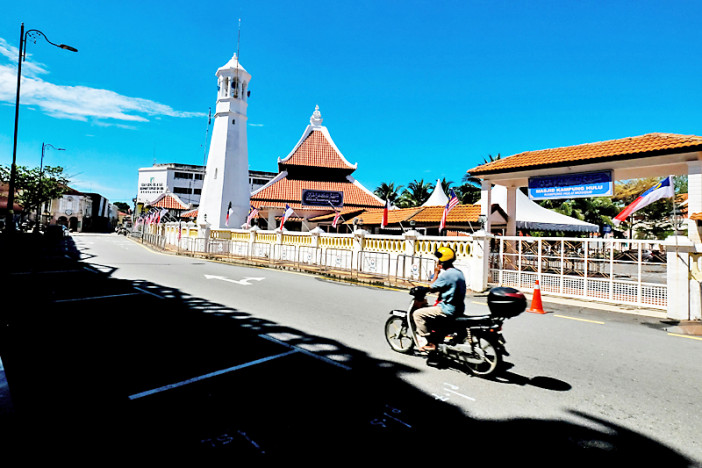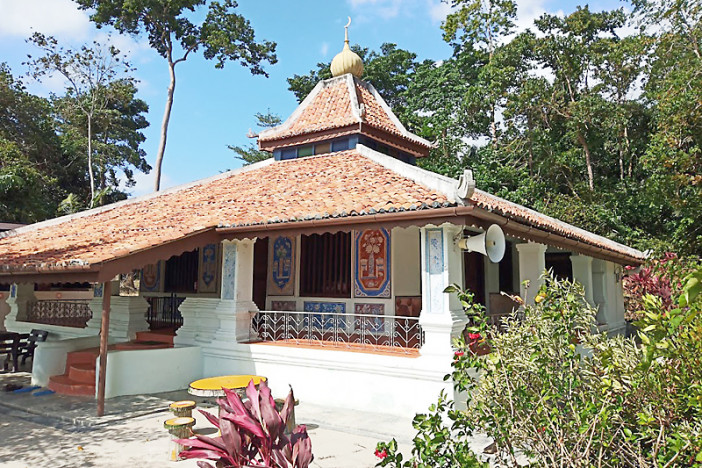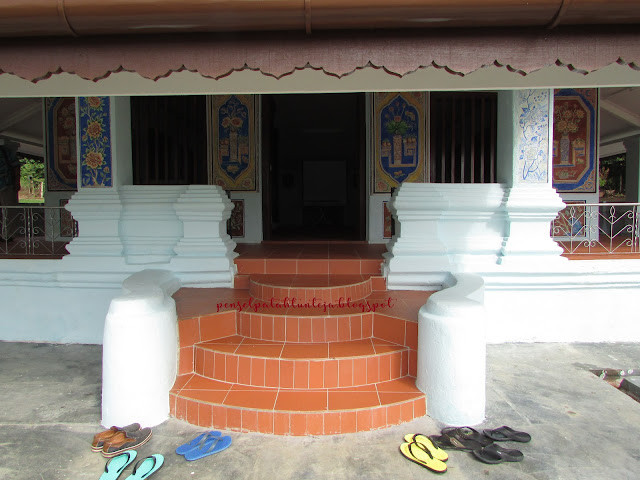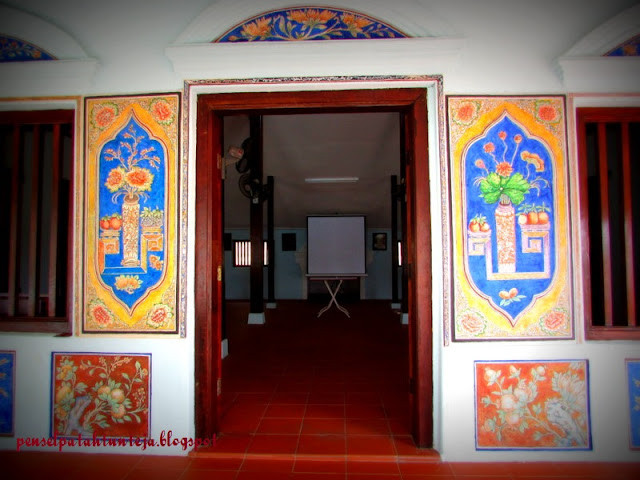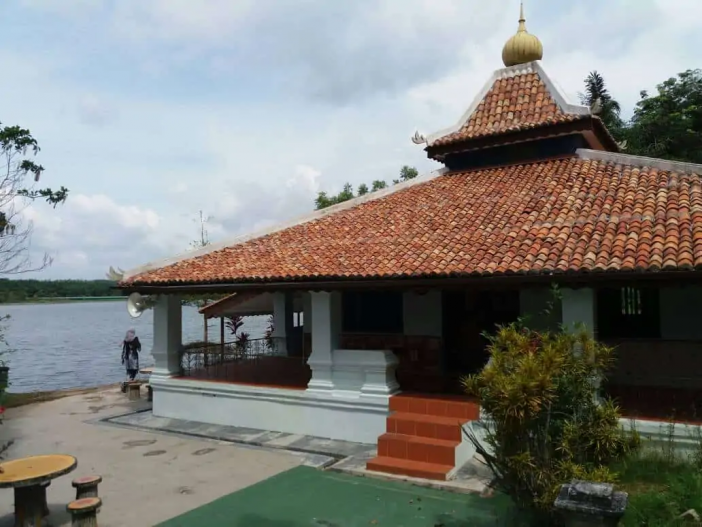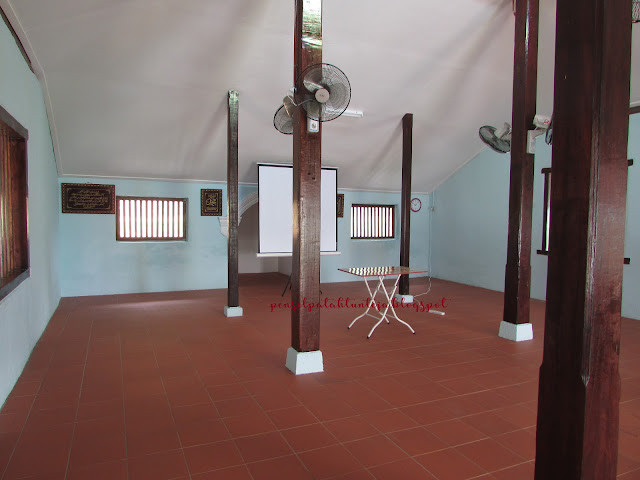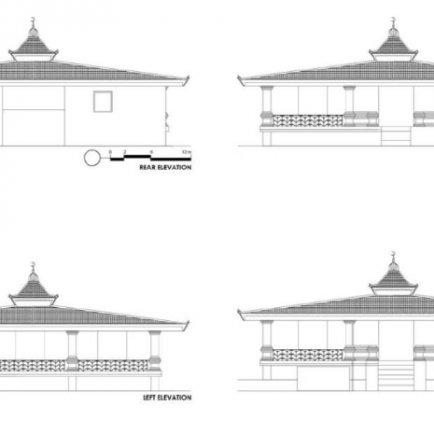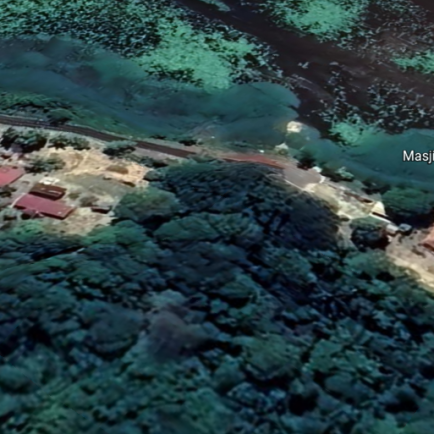Machap Old Mosque
History
Its history can be traced back to as early as the 16th century and it was first built by a dignitary named Jailani Mendik Masap, locally known as Datuk Machap, He was a merchant from Makasar, on the island of Sulawesi, in present-day Indonesia.
It was said that he was the royal aide of the former Sultan of Melaka, Sutton Mahmud shah. Due to incessant attacks by the Portuguese, Datuk Machap and his followers retreated and sailed up the Melaka River until they reached an ore near the Durian Turgal River, a tributary of the upper Melaka River, He war said to be in search of a suitable site to build a mosque; the site that he found stood on a small hill, overlooking the river. Along with the mosque, a nearby settlement was also started with its land used to grow pineapples and paddy. The area was then named Kampung Machap in honour of its founder.
In 1865, a collective effort by the locals took place to upgrade the rudimentary structure to make it into a sturdier bulling. Donations were collected from the people and also from many Chinese people living there at that time, Their names were engraved on the stone plate attached to the mosque's building wall at the veranda area.
In 1976, a dam was built in the nearby area and it submerged the nearby village area. However, he mosque was spared due lo its elevated site as compared to the villagers houses which were located on lower ground, A new mosque was built in 1978 as compensation to the local folks in the new settlement area founded by the government.
Since then the mosque that sits on the reserve area at the Melaka Water Corporation was left abandoned until restoration and construction work were carried out in 2007, two years offer it was gazette as a heritage building. Today, the small yet handsome structure still stands overlooking the Durian Tunggal Dam Late.
Urban and Architectural
The double-tiered pyramidal roof has now become a feature of
a typical Melaka mosque typology, with the absence of a minaret. Nonetheless,
unlike the rest, the pinnacle is replaced with a small onion-shaped dome,
accentuated with intricate detailing at its roof eaves. A series of glass-stained
clerestory windows ore tucked in between the roof tiers.
The small main prayer hall is surrounded by a veranda area,
specified by a series of square base columns. linked by a steel railing. The
entrance step is marked by concrete balustrade and plinth elements, an inference
of the former Hindu temple architecture, The columns and walls are richly
decorated with paintings and well finishing of Chinese influence. Towards the
end, an old beduk is placed on a platform, and a stone plate is attached to the
dead end wall.
As the mosque is no longer in use, the main prayer hall has
remained empty without any excessive finishes and a mimbar. The main six
columns supporting the roof structure are finished by the timber ceiling paneling
which can be viewed inside the mosque Equipped with some timber balustrade
windows, it provides sufficient daylight and ventilation. A smell mihrab niche
is placed alongside the gibla wall.
Description
Due to its precious and valuable architectural heritage, the
Machap Old Mosque was spared from being submerged in the manmade water body
caused by the damming of the river in 1986, As it was situated on a much higher
elevation, it was not fully submerged in water. The Machap Old Mosque is located
in a former town of Machap Lama before a new town was developed nearby to
replace the old town. It is situated approximately 18 miles (30 kilometers]
from Melaka city.
References
https://penselpatahtunteja.blogspot.com/2017/05/masjid-lama-machap-mempunyai-mural-yang.html
https://www.mpag.gov.my/2021/06/21/masjid-lama-machap/
Aziz, A. A., 2016. MASJID - Selected Mosques and Musollas in Malaysia, ATSA Architects Sdn. Bhd.
Details
Location
76100 Alor Gajah, Malacca, Malaysia
Worshippers
300
Owners
Datuk Macap
Architect Name
Year of Build
1902
Area
249
Drawings
Map
History
Its history can be traced back to as early as the 16th century and it was first built by a dignitary named Jailani Mendik Masap, locally known as Datuk Machap, He was a merchant from Makasar, on the island of Sulawesi, in present-day Indonesia.
It was said that he was the royal aide of the former Sultan of Melaka, Sutton Mahmud shah. Due to incessant attacks by the Portuguese, Datuk Machap and his followers retreated and sailed up the Melaka River until they reached an ore near the Durian Turgal River, a tributary of the upper Melaka River, He war said to be in search of a suitable site to build a mosque; the site that he found stood on a small hill, overlooking the river. Along with the mosque, a nearby settlement was also started with its land used to grow pineapples and paddy. The area was then named Kampung Machap in honour of its founder.
In 1865, a collective effort by the locals took place to upgrade the rudimentary structure to make it into a sturdier bulling. Donations were collected from the people and also from many Chinese people living there at that time, Their names were engraved on the stone plate attached to the mosque's building wall at the veranda area.
In 1976, a dam was built in the nearby area and it submerged the nearby village area. However, he mosque was spared due lo its elevated site as compared to the villagers houses which were located on lower ground, A new mosque was built in 1978 as compensation to the local folks in the new settlement area founded by the government.
Since then the mosque that sits on the reserve area at the Melaka Water Corporation was left abandoned until restoration and construction work were carried out in 2007, two years offer it was gazette as a heritage building. Today, the small yet handsome structure still stands overlooking the Durian Tunggal Dam Late.
Urban and Architectural
The double-tiered pyramidal roof has now become a feature of
a typical Melaka mosque typology, with the absence of a minaret. Nonetheless,
unlike the rest, the pinnacle is replaced with a small onion-shaped dome,
accentuated with intricate detailing at its roof eaves. A series of glass-stained
clerestory windows ore tucked in between the roof tiers.
The small main prayer hall is surrounded by a veranda area,
specified by a series of square base columns. linked by a steel railing. The
entrance step is marked by concrete balustrade and plinth elements, an inference
of the former Hindu temple architecture, The columns and walls are richly
decorated with paintings and well finishing of Chinese influence. Towards the
end, an old beduk is placed on a platform, and a stone plate is attached to the
dead end wall.
As the mosque is no longer in use, the main prayer hall has
remained empty without any excessive finishes and a mimbar. The main six
columns supporting the roof structure are finished by the timber ceiling paneling
which can be viewed inside the mosque Equipped with some timber balustrade
windows, it provides sufficient daylight and ventilation. A smell mihrab niche
is placed alongside the gibla wall.
Description
Due to its precious and valuable architectural heritage, the
Machap Old Mosque was spared from being submerged in the manmade water body
caused by the damming of the river in 1986, As it was situated on a much higher
elevation, it was not fully submerged in water. The Machap Old Mosque is located
in a former town of Machap Lama before a new town was developed nearby to
replace the old town. It is situated approximately 18 miles (30 kilometers]
from Melaka city.


